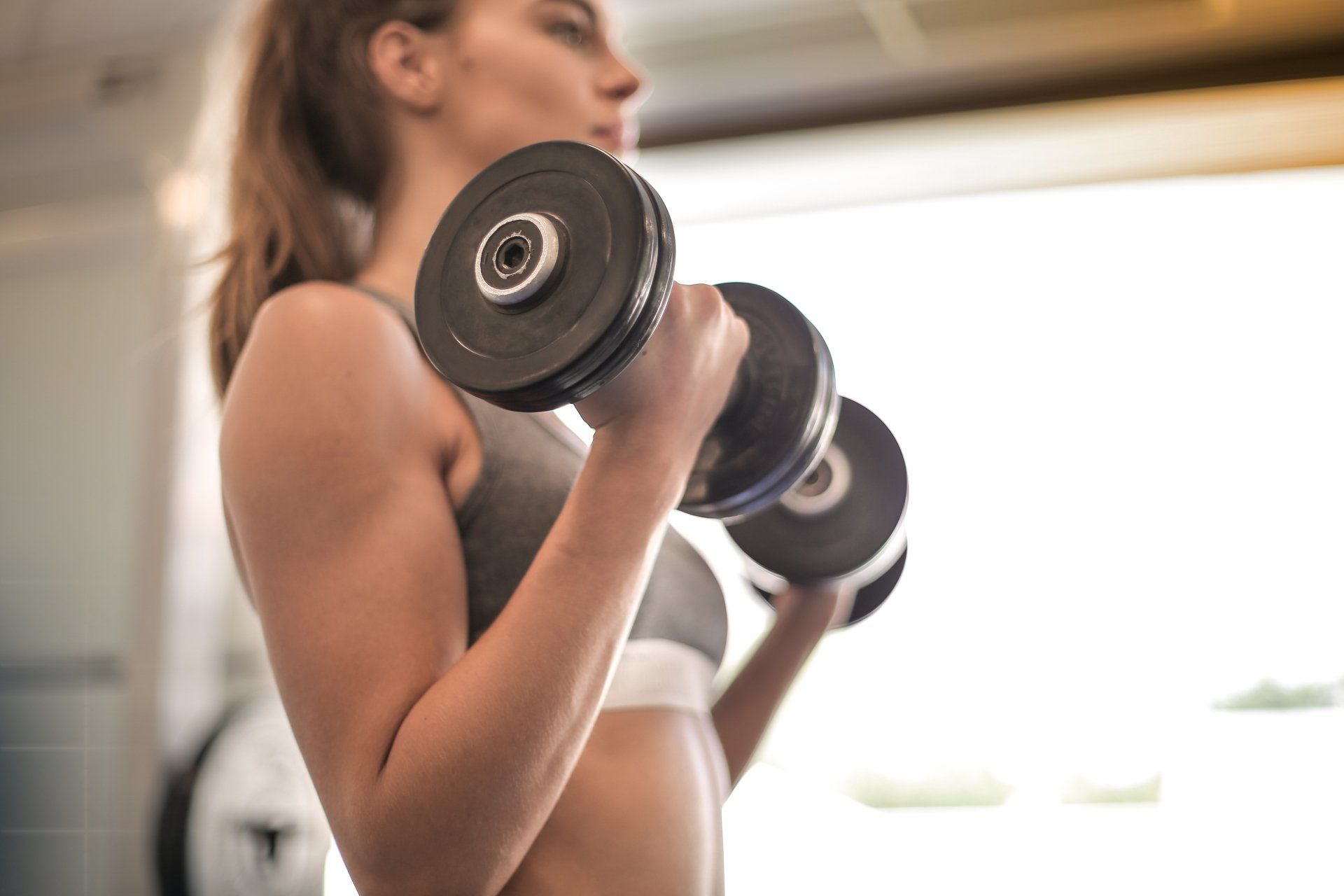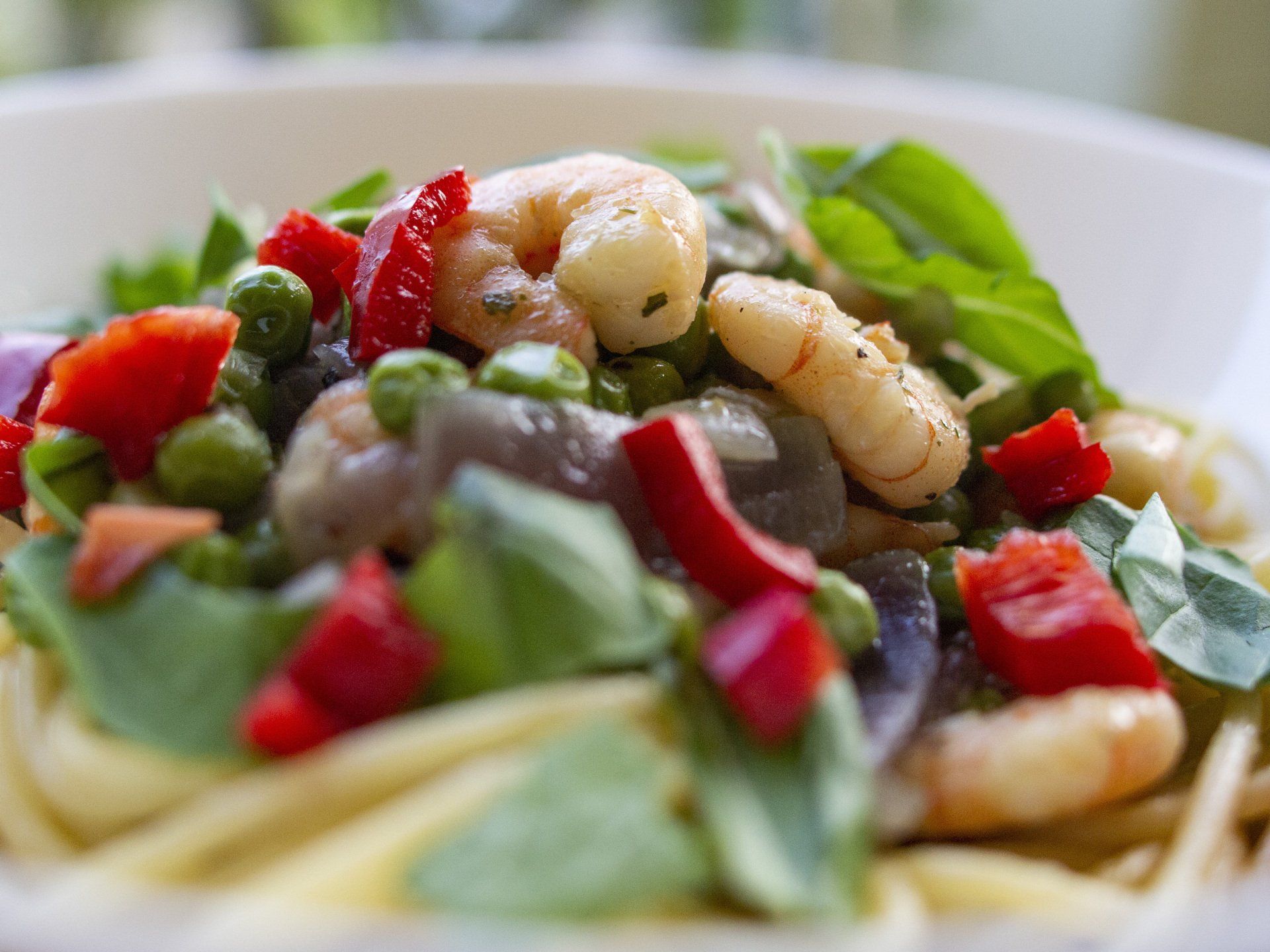A Beginner Guide to Fat Loss
Movement
In terms of your fat loss journey, you probably already know that you need exercise. Although regular movement and activity have a plethora of health and wellness benefits, there a few main reasons we want to train our body:
- Exercise uses energy (aka calories) as fuel. We take in food on a daily basis to support and fuel our bodies typical activity like walking, bending, picking things up, etc. On top of that, we choose to exert ourselves in training, and we need extra fuel to support the extra load.
- Regular resistance training supports lean tissue. We all know if we want our muscle to be healthy and active, we have to USE it. This means picking up heavy things and putting them back down (in a nutshell). Moreover, the more lean tissue we have, the higher our overall metabolism/energy expenditure is, therefore burning more calories at rest than before.
- We were made for it! At the end of day, our body was created to do work. This means pushing, pulling, running, jumping, rolling, etc. is what our body is designed to do. When we use our body for its proper function, it stays healthy and able to perform for us in daily living.
Now that we have covered some basics of why we would want to practice regular movement in the first place, let’s cover some specifics on what types of training can help with losing body fat.
Resistance Training
Anytime we are putting our muscles to move something that is resisting that motion, we are resistance training. This could be bodyweight moves like push-ups and pull-ups or it could be weighted movements bench press and deadlift. Either way, putting our muscles under tension on a regular basis will help to keep our tissue healthy and support our joints for proper stability.
Usually, resistance training uses a certain number of sets, reps and load to create tiny tears in our muscle tissue. These tears are called microtrauma and when it happens to our body, it responds by repairing the tissue in a way that can handle the load next time. This is why we see bigger, stronger muscles from training them on a regular basis. Of course you have to give your body the raw materials to recover properly to maximize this process (more on post workout recovery later).
How you choose to train will depend on your preferences, strengths, weaknesses and overall work capacity.
Cardiovascular Training
Let’s get this out of the way first. Specific cardiovascular training is not necessary to achieve and maintain fat loss results, period. However, this doesn’t mean that cardio is not HELPFUL to burn more calories and facilitate health benefits. Many times when we get into a discussion of what type of cardio to do, people suggest all sorts of things from hours on the stair stepper to doing HIIT cardio 4x/week. So how do we know what the right choice is?
Understand the goal of any training protocol for fat loss is to elevate resting metabolic rate and optimize the hormones/enzymes involved in the muscle building/fat burning process. With that in mind, we know that the majority of our training in the first place is going to be strength based in nature. This means we are going to pick up something heavy and put it back down over and over (essentially). For conditioning purposes and to raise metabolic rate long after you leave the gym, you’ll want to prioritize short, intense bouts of cardio activity such as 4-8 rounds of an exercise with 10-30 seconds of work and either equal or double the time in rest.
Long story short, unless you have a specific event you’re training for or you just enjoy jogging, trying to get into a “fat burning” cardio zone on the treadmill is going to do more harm than good. Your body will adapt to long bouts of sustained cardio and then you’ll need to go longer just to get the same effect, while also lowering your metabolic rate from muscle loss if you continue to only go on long runs. That being said, don’t underestimate daily walking as a way to help with fat loss. We were designed for it, it doesn’t require much recovery and when you do it outside, you feel better! I recommend 30 minutes minimum at least 4 days/week.


NUTRITION
Perhaps the biggest piece of the fat loss puzzle, and the one that people struggle with most often, is what to eat. Let’s first establish that eating for fat loss and eating for overall health are different subjects. This doesn’t mean that they don’t overlap in certain areas but in general, controlling calories for fat loss vs a health and wellness specific goal will differ slightly.
When it comes to nutrition with a fat loss focus, we need to remember our foundational principles of losing body fat:
- You need a calorie deficit to lose fat. Put simply, in order to lose fat you have to consume less energy (calories) than you burn for activity.
- Protein maintains lean muscle tissue. In order for you to hold onto muscle tissue as much as possible while eating less calories, a certain amount of protein must be an adequate part of those overall calories. As stated before, more lean tissue leads to a higher metabolism and better body composition results.
- Adherence and consistency are king. Even if you have the EXACT macronutrient split and every single food laid out for you, it means nothing if you can’t stand the thought of sticking to the plan 90% of the time or more. Above all else you must establish behaviors that allow you to create a life where you can find a middle ground between your goals and your cravings.
Keeping these principles in mind, there are many ways you can find success in forming an eating plan that works for YOU. You and I will enjoy different protein sources and we will both discover our own tips and tricks that work well to improve our consistency over time. This is the main reason why we need to take the approach of using a starting point and learning to create our success habits from there. Now that we know the basics of successful fat loss nutrition, how do we stick to those principles?

Calories and Macronutrients
As we learned before, we need to eat less calories than we burn to lose fat. Why? Simply because calories are our bodies unit of energy. When we need more energy for our activity than we are providing through food, our body has to pull from our excess stores of energy (aka body fat!). While this is the foundation of the hierarchy of fat loss, there are certain nutrients we need in larger amounts that make up our calories. We call these macronutrients and they are divided into three categories; proteins, carbohydrates and fats.
We want to separate our calories into these groups to help maintain the body composition we want and limit the amount of lean mass we could potentially lose from being in a calorie deficit. Not just the fact that we are creating an energy imbalance but how that energy is distributed can be the deciding factor in how much weight loss comes from fat mass vs lean mass.
Proteins, carbohydrates and fats each have a different calorie value in terms of how much energy they provide your body. Protein and carbohydrate come in at four calories per gram, while fat is nine calories per gram. Put simply, if you care more about your body shape than you do about the number on the scale, macronutrients need to be a focus for you.
Although each macro has a caloric value, they each play a different role within the body. For example, protein is involved in countless processes within the body. Many hormones are made of proteins and they travel throughout the body via carriers made of proteins as well. From a body composition perspective, we MUST get enough protein to stimulate muscle protein synthesis (aka raising metabolic output), optimize recovery and increase lean body mass in combination with resistance training. Moreover, protein is the most satiating and most thermic macronutrient, meaning it leaves you feeling fuller longer and takes the most energy (calories) to process in the body.
On the other hand, carbohydrates and fats are typically referred to as energy macronutrients. This is due to the fact they are the main contributors to ATP production (energy currency of the body) and fuel all the activity we do. Our body uses a mixture of both at all time, but the intensity of the activity can determine whether carbs or fats are the main fuel source. For example, a workout that is very high intensity like HIIT training will use carbs as the main fuel because the activity demands a fast fuel source. On the other hand, walking or running at a lower heart rate will use mostly fat as fuel because the energy needed is lower and can sustain the duration longer. They do more than just provide fuel though, dietary fat is essential for proper hormone balance and overall cellular health. So now that we know more about what these nutrients do, lets look at how we would start to figure out how many proteins, carbs and fats a person would need to start a fat loss journey.

Tracking Food
Being accountable to your food intake is an essential piece of calorie management when you have a fat loss goal. It doesn’t matter how you track, only that you’re bringing awareness to what is going in your body. For example, one way would be to put everything you on a plate (can’t stay in a bag, wrapper, ect.) and take a picture of it. That way you can review your eating at the end of the day and be conscious of what exactly you’re eating in order to make adjustments based on feedback.
Now, if you plan on counting macros (as we described above) you’ll need to put a little more effort into it. While writing down your foods and all the numbers associated with them is one way, many people rely on tracking apps like My Fitness Pal or the 1st Phorm app to keep a food log.
This process includes scanning the bar code or searching the food you’re eating, weighing it out on a food scale (or use measuring cups although not as accurate), and input the amount you will eat. As you go from meal to meal you can see how much of each macro you have left for the day and distribute your remaining numbers appropriately as you see fit.
To get started with using an app, it’s best to track what you’re currently eating and get a good sense of just how many calories you’re taking in on a daily basis. Doing this for 4-7 days consistently will give you the truth about how much you’re taking in so you can adjust appropriately. The process of tracking each meal will be a pain in the ass at first, expect that. Like any new skill there is a learning curve involved and once you put in the time and effort for 7-10 days, it will begin to become second nature at meal time.
One thing that I’ve seen keep people more consistent is pre-tracking food for the day ahead of time. Let’s say you know what you will eat for breakfast, lunch and two snacks tomorrow, you could go ahead and log those foods ahead of time and in that way, you’ve essentially developed a meal plan for yourself. At the end of the day (or before then) you can throw together you last meal of the day and have an easier time consistently hitting your numbers.
On the other hand, let’s say you’re going out to eat on a Friday night and you already know the restaurant and what your usual order is. Take the time to look up the menu ahead of time, track the food you usually get and now you can work the rest of your day with the remaining numbers, knowing that meal is taken care of.
At the end of the day, no matter how you manage your nutrition, successful individuals will have some form of self monitoring, regular exercise, a structured program (usually) and a mindset focused on long term success over what a weekly weigh in may show. There is no “best” diet or plan so find what works for you by being willing to mess up along the way and adapt as you see fit.

REGENERATION
Now let’s talk about, in my opinion, the most overlooked part of a fat loss journey, regeneration. Regeneration is essentially the act of nurturing your body and mind in a way that allows you to perform better as time goes on. In a way, it is how we “re-charge” our batteries so that we can work as good, if not better, tomorrow as we did today.
This is so much more than just 8 hours of sleep and a massage. It takes a compilation of things to help “reboot” your system from a mental and physical standpoint. Everything from proper hydration to meditation to contrast showers and journaling is considered regenerative in some fashion. Hell, you might even find your own way to slow down and “de-stress” that nobody knows about and that’s the beauty of it because this becomes individualized very quickly.
The point we are trying to make here is that methods of regenerations such as sleep, meditation, breathing,..etc, although often overlooked can and will be just as important on your weight loss journey as everything else. So if you are serious about your health and want to make some positive changes to you life do not skip this last step. Your success when it comes to health and weight loss are now in your grasp. Take it one step at a time and make sure to focus on your movement, nutrition, and regeneration. If you do those three things, you will achieve your goals.
By Justin Carroll


